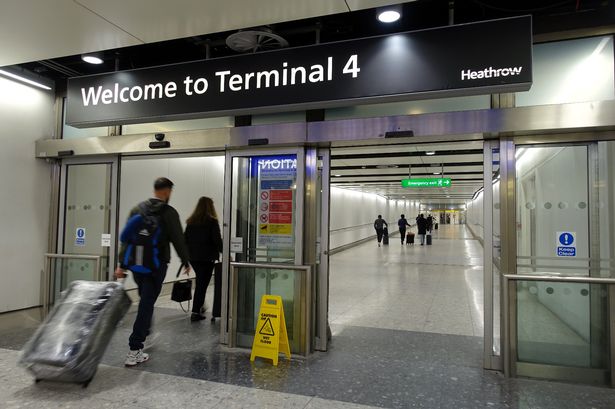Anyone travelling abroad is advised to consult Foreign, Commonwealth and Development Office guidance before setting off
Heathrow Airport has issued an important message to any Brits planning to travel abroad soon. The London-based facility posted its alert on X, formerly Twitter, earlier today, encouraging prospective travellers to sign up for key alerts.
“Looking to book your next trip from #Heathrow?”, the post read. “Whether you’re relaxing on the beach or engaging in extreme sports, make sure to check the latest @FCDOtravelGovUK travel advice for your destination and sign up to http://GOV.UK email alerts.”
The Foreign, Commonwealth and Development Office, or FCDO, is the UK Government department responsible for handling the country’s foreign affairs and providing advice to citizens abroad. Online, it offers an A-to-Z list of 226 countries and territories, including details on ongoing incidents, safety, entry requirements, and other essential travel information.
Similar travel guidance related to health can also be found at the TravelHealthPro site, operated by the National Travel Health Network and Centre (NaTHNaC). This offers specific details on disease outbreaks and ongoing concerns, along with vaccination guidance.
Travellers are generally advised to check health advisories and vaccination details at least eight weeks before their departure. Beyond this, the FCDO encourages Brits to use its foreign travel checklist to ensure they are fully prepared.
The checklist, available on the FCDO website, details the following key points:
- Research your destination and check the latest advice and warnings.
- Get insured as soon as you book the trip.
- Check you have all the necessary documents for travel.
- Consider your health, including relevant vaccination advice and rules on taking medication abroad.
- Prepare for the unexpected and have backup plans for accessing key information abroad.
- Know that you can contact the FCDO in London 24 hours a day on 020 7008 5000 for advice. You may also contact your nearest British embassy abroad.
Despite this, the Government’s website warns: “Our foreign travel checklist aims to help you plan for a trouble-free trip. It is not exhaustive. No foreign travel can be guaranteed as safe, and you take personal responsibility for your own travel.”
For more information, head to the FCDO’s travel advice website or TravelHealthPro here.
What counts as a liquid in luggage when travelling abroad?
The UK Government’s full list of what is considered hand luggage liquids on flights is below:
- Cosmetics and toiletries, including creams, lotions, oils, perfumes, mascara and lip gloss
- Liquid or semi-liquid foods, for example, soup, jam, honey and syrups
- Any other solutions and items of similar consistency
- Sprays, including shaving foam, hairspray and spray deodorants
- Contact lens solution
- Pastes, including toothpaste
- Gels, including hair and shower gel
- All drinks, including water
Liquid carry-on rules differ depending on the airport. Before your trip, verify the regulations at your departure airport, any airports you’ll pass through, and on your return journey.
The Government’s advice adds: “At most airports, you cannot take liquids in containers larger than 100ml through security. This still applies if the container is only part full. Some airports may allow you to take liquid in containers that hold up to two litres of liquid.
“Check for exemptions if you’re taking baby milk or food, medicines, food for special dietary requirements or liquids bought in duty free.”



